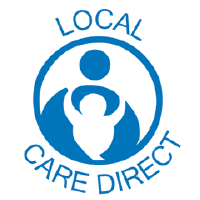- New York, United States of America
- 23/10/2024
Since they were originally explored in animal models in the 1960s, antibody-drug conjugates (ADCs) have seen many booms. The initial ADC clinical studies took place in the 1980s, and Mylotarg, the first ADC drug, was approved in 2000. The removal of Mylotarg, however, came as a huge shock to the industry, and it was relaunched in 2017.
The launch of a number of clinically and commercially effective drugs (e.g. Adcetris) in the 2010s reignited interest in the ADC model, resulting in a surge of investment. Later, clinical trials of highly anticipated PDB dimer therapies (e.g., Stemcentryx's SCLC medication) failed due to bystander toxicity and other issues, causing the field to panic once more, sparking a debate on whether significant therapeutic metrics could be acquired beyond early success.
As many as eight ADCs have been approved in the last four years. An impressive array of new clinical data and stunning valuation acquisitions such as Gilead's $21 billion acquisition of Immunomedics have brought ADC drugs back into the limelight.
Traditional small molecule-based ADCs are showing meaningful advantages in difficult-to-treat indications such as triple-negative breast cancer, and new drug design paradigms are emerging, such as new payload classes including oligonucleotides, proteins, and degradates. ADCs are being tested in new indications outside of oncology, and new linker and antibody engineering technologies are enabling targeting components and warheads with great versatility. The field appears to be in another phase of exponential growth.
FDA-approved ADC drugs, their targets, and the structures of some representative warheads (from Drughunter)
Zynlonta | CD19
(loncastuximab tesirine-lpyl)
PBD dimer (SG3199) – cleavable linker
large B-cell lymphoma
0.15 mpk IV Q3W 2 cycles to 0.075 mpk Q3W
ADC Therapeutics (2021)
Blenrep | BCMA
(belantamab mafodotin-blmf)
MMAF – non-cleavable linker
relapsed or refractory multiple myeloma
2.5 mg/kg IV over 30 min, Q3W
GlaxoSmithKline (2020)
Trodelvy | Trop-2
(sacituzumab govitecan)
topoisomerase I inhibitor (SN38) – cleavable
metastatic triple-negative breast cancer
10 mg/kg IV on d1, d8 – 21d cycle
Immunomedics (acq. Gilead) (2020)
Enhertu | HER2
(trastuzumab deruxtecan)
topoisomerase I inh. (deruxtecan) – cleavable
unresectable or metastatic HER2+ BC
5.4 mg/kg IV over 90 min, then 30 min, Q3W
AstraZeneca/Daiichi Sankyo (2019)
Padcev | Nectin-4
(enfortumab vedotin)
monomethyl auristatin E, cleavable linker
advanced or metastatic urothelial cancer
1.25 mpk IV over 30m Q1W, 3 wk of 28d cycle
Astellas/Seattle Genetics (2019)
Polivy | CD79
(polatuzumab vedotin-piiq)
monomethyl auristatin E, cleavable linker
RR diffuse large B-cell lymphoma
1.8 mg/kg IV Q3W for 6 cycles
Genentech, Roche (2019)
Lumoxiti | CD22
(moxetumomab pasudotox)
Pseudomonas exotoxin, cleavable linker
relapsed or refractory hairy cell leukemia
0.04 mpk IV over 30m, d1, 3, 5 of 28d cycle, 6x
AstraZeneca (2018)
Besponsa | CD22
(inotuzumab ozogamicin)
calicheamycin, cleavable linker
RR CD22+ B-cell precursor ALL
1.8 mpm2 IV Q1W 21d cycle, Q1W 3 wk/28d
Pfizer/Wyeth (2017)
Kadcyla | HER2
(trastuzumab emtansine)
maytansinoid (DM1), non-cleavable linker
HER2-positive metastatic breast cancer
3.6 mg/kg IV over 90m, then 30m Q3W
Genentech, Roche (2013)
Adcetris | CD30
(brentuximab vedotin)
monomethyl auristatin E, cleavable linker
replased HL and relapsed sALCL
1.8 mg/kg IV over 30 mins Q3W
Seattle Genetics, Millennium/Takeda (2011)
Mylotarg | CD33
(gemtuzumab ozogamicin)
calicheamycin, cleavable linker
relapsed acute myelogenous leukemia
3 mg/m2 IV on days 1, 4, & 7
Pfizer/Wyeth (2000/2017)
Legend | Ab Target
non-proprietary name
warhead
indication
administration
sponsor and/or originator (year approved)
